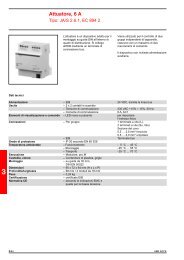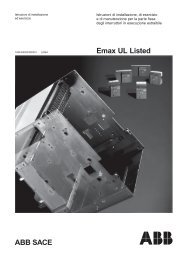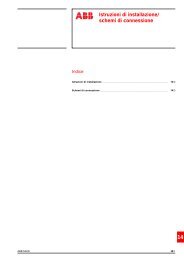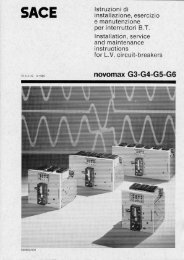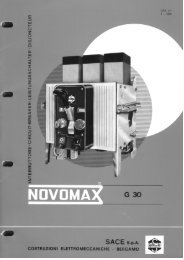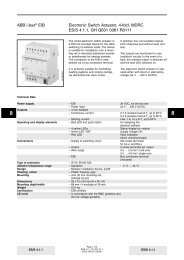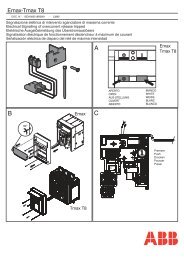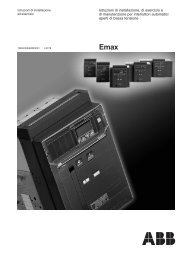ABB i-Bus® EIB/KNX ABB Powernet EIB/KNX
ABB i-Bus® EIB/KNX ABB Powernet EIB/KNX
ABB i-Bus® EIB/KNX ABB Powernet EIB/KNX
You also want an ePaper? Increase the reach of your titles
YUMPU automatically turns print PDFs into web optimized ePapers that Google loves.
<strong>ABB</strong> i-bus ® <strong>EIB</strong>/<strong>KNX</strong><br />
<strong>ABB</strong> <strong>Powernet</strong> <strong>EIB</strong>/<strong>KNX</strong><br />
LEANtouch (monochrome),<br />
SMARTtouch (monochrome, colour)<br />
Type: 6x36/30M…, 6x36/100x…, 6x36/100CB…<br />
Functional description: Alarm function<br />
The panel offers the possibility of displaying<br />
up to 10 different alarm messages.<br />
The parameter “Number of<br />
alarm messages” defines the required<br />
number.<br />
Each alarm message has its own<br />
communication object “Alarm 1” to<br />
“Alarm 10”. The communication objects<br />
can either be 1 bit or 14 byte. The<br />
setting “Type of the alarm object” sets<br />
the size of the object. Each alarm object<br />
can thus be set individually.<br />
The alarm function can be used in<br />
combination with the inputs of the monitoring<br />
function (see page 18) or on<br />
its own. In combination with the monitoring<br />
function, the inputs and the<br />
alarm objects must be linked via internal<br />
group addresses.<br />
If a telegram e.g. an ON telegram is<br />
received at an alarm object, a window<br />
is opened in the screen of the panel,<br />
in which the alarm text is displayed.<br />
The alarm text can be freely entered<br />
in the panel software. The panel simultaneously<br />
triggers a signal tone.<br />
The duration of the signal tone can be<br />
set and it can also be deactivated.<br />
All alarm messages which occur or<br />
have occurred can be displayed via a<br />
further window in the panel. The window<br />
is opened by pressing the “Extras”<br />
button followed by “Alarm messages/Fault<br />
messages”. All alarm and<br />
fault messages are displayed with the<br />
date, time and acknowledgement.<br />
The acknowledgement of an alarm<br />
message is carried out via the “OK”<br />
button in the alarm text window. If the<br />
setting “Send zero at acknowledge”<br />
has been activated with “yes” for a<br />
1-bit alarm object, the group address<br />
that is linked with the alarm object is<br />
sent on the bus with the value “0”.<br />
In the case of a 14-byte alarm object,<br />
an individual acknowledgement text<br />
(max. 13 characters) can be sent with<br />
the acknowledgement.<br />
Via the acknowledgement object “Acknowledge<br />
global”, a group address is<br />
sent as soon as an acknowledgement<br />
has been carried out at one of the<br />
alarm objects.<br />
76 May 2006




